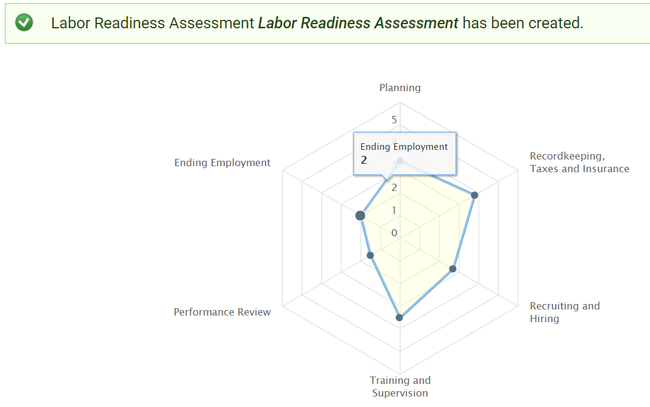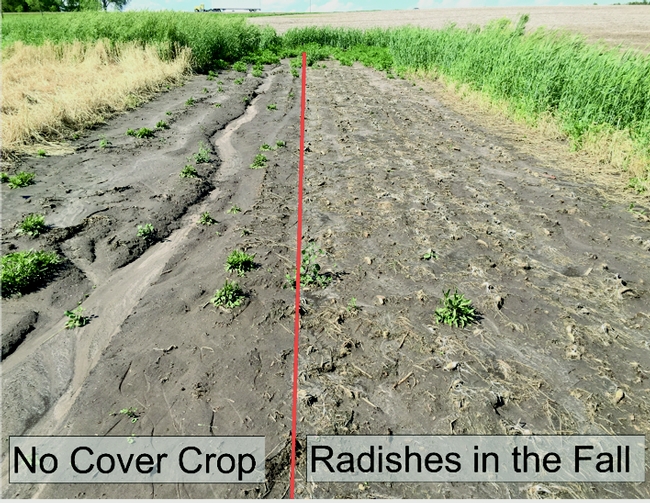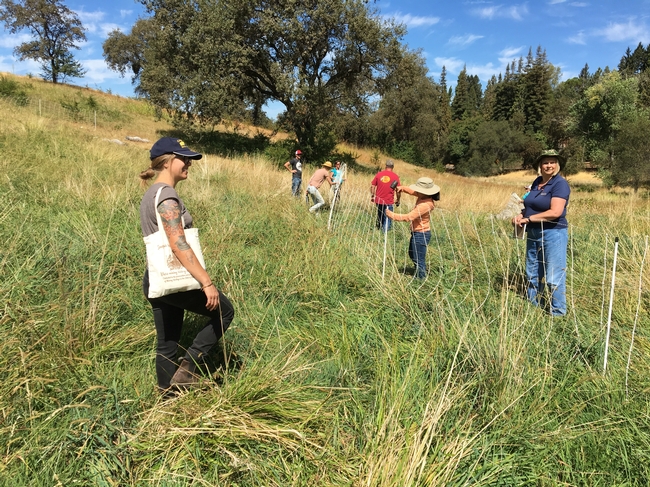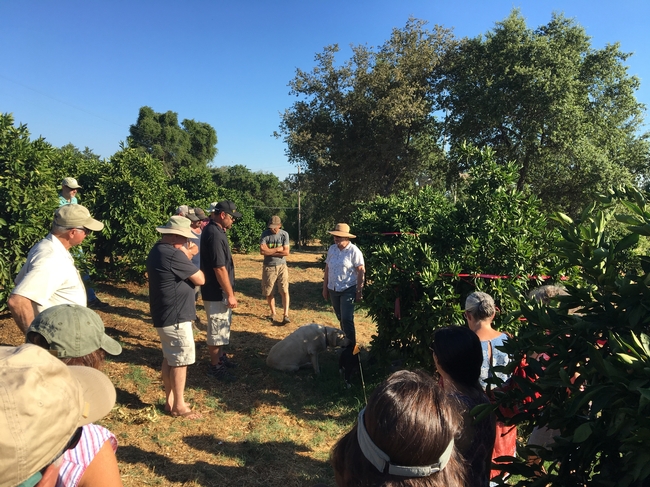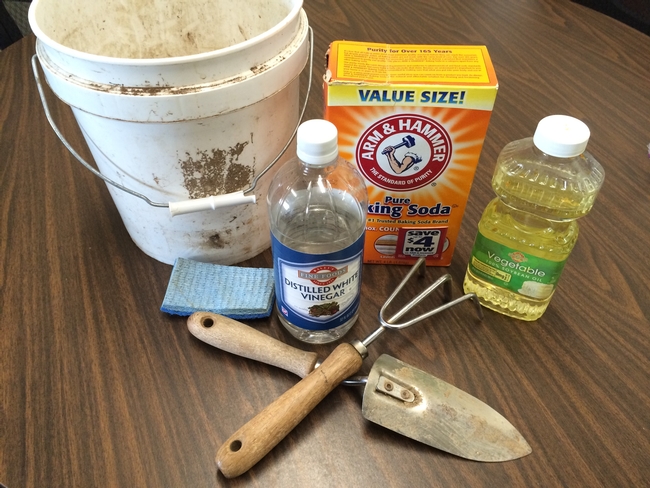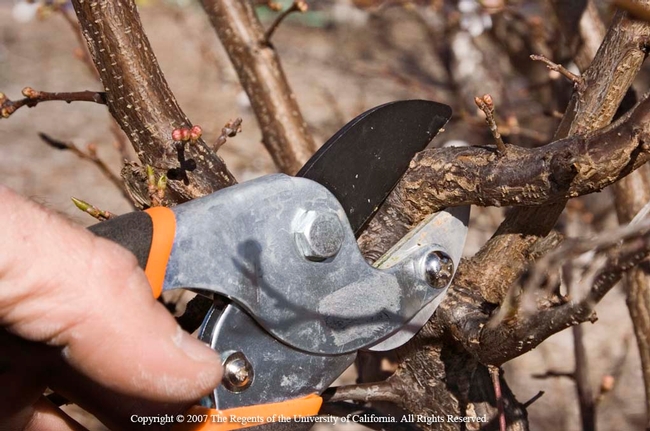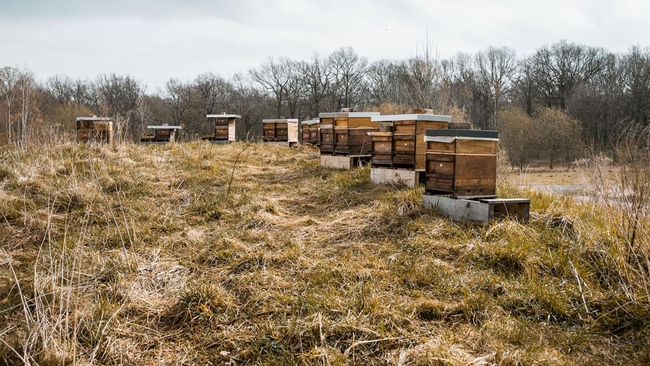Posts Tagged: farming
Everything You Want to Know About Labor but Are Afraid to Ask
Have you completed a cash flow analysis?
Cash flow is not profitability, it is the statement of incoming dollars and outgoing dollars at different times of the year, which results in a cash flow statement. Analyzing your cash flow will help determine if you are able to pay your employees throughout the year, seasonally, or if a budget needs to be made to ensure cash is available when needed.
Have you calculated the full cost of employees you want to hire?
The minimum hourly wage has increased but that still doesn't account for the myriad of costs attached to hiring an employee. Fulfilling legal requirements for worker's comp, insurance, and other costs can derail your budget; causing not only financial hardship for the farm but also your employees. It is always a good idea to consult with employment experts to find out what exactly it will cost to hire your prospective employee.
Do you understand the legal requirements for becoming an employer?
First, you will need an employer identification number for tax and legal purposes. Laws and requirements are constantly changing so consulting an expert is recommended.
Are you prepared, or have you identified a person who is responsible, for handling payroll, taxes, workers comp and other related paperwork and payments?
Handling payroll and other employee needs should be the responsibility of a single person in your operation. While employees can report their hours and submit forms, a trained individual needs to be responsible for making clerical decisions and correcting common mistakes to avoid headaches later on. If the owner is not able to perform these duties, someone else must. However, that person does not need to be an expert in all of these areas as long as they have qualified advisers in place to help them with tax, insurance, and regulatory decisions.
Get your labor questions answered by Bryan Little, from the Farm Employers Labor Service, who will be our guest speaker at the Farmer-to-Farmer breakfast on March 14th, 2019 at Happy Apple Kitchen. Sign-up now at https://ucanr.edu/survey/survey.cfm?surveynumber=26870 . Put it on your calendar today!
Additional labor related resources:
- Labor Readiness Self-Assessment Tool - University of Vermont
Answer a list of 21 questions and a personalized report will be generated letting you know what areas to work on. http://www.uvm.edu/aglabor/dashboard/node/add/readiness-assessment
- FELS –Farm Employers Labor Service - a division of the California Farm Bureau Federation
“FELS strengthens the working relationship between farmers and field workers and helps farmers comply with labor and employment laws” https://www.fels.net/1/30-labor/605-vineyard-worker-fatality-highlights-importance-of-machinery-safety-training.html
- FELS Personnel & Labor Audit Checklist
Use this checklist to ensure you are up to date with requirements regarding overtime, minimum-wage, posters, etc. https://www.fels.net/1/images/Audit-Checklist-May-2018-with-FELS-letterhead2.pdf
- Understanding Cash Flow Analysis - Iowa State University
This page has links to cash flow budget sheets, cash flow decision maker tools, etc. https://www.extension.iastate.edu/agdm/wholefarm/html/c3-14.html
Risk - What are You Waiting For?
Risk – What are you waiting for?
As the old saying goes, when it rains it pours. Nobody knows that better than we do right now, literally. For most farmers, rain is a good thing. However, for mandarin growers the amounts of rain and lengthy periods of high humidity are not good for mandarins in the middle of the season. This brings up the issue of risk on the farm. Drought, wildfire, food safety issues, crop loss, rain or frost damage are just a few of those risks.
Despite the periodic heavy rains, Placer and Nevada Counties are considered “abnormally dry” for this time of year according to the national drought monitor. After moderate and severe drought, this may seem like a fairly normal year. With shifting climates the “abnormal” could become normal over time. As we saw this fall, wildfire tore through thousands of homes and hundreds of thousands of acres. It seems the “most devastating wildfire in history” is becoming a headline each year.
While the risk of catastrophic wildfire seems to be increasing each year, rain and frost damage have historically plagued foothill farms. With travel throughout the world as easy as an overnight plane ride, international agriculture pests and diseases are also a real possibility here. I am not trying to scare you - I just want to highlight the need for farmers and ranchers to be aware of and plan for risks, and have the necessary resources to get through it.
Mother Nature is not the only risk; consider the romaine lettuce farmers on the Central Coast who had no market this fall when E. coli was found in that product. Even if one farmer did everything possible to maintain food safety, their crop may have been a total loss. Wouldn't you be glad to have crop insurance or revenue protection in place if you were in their shoes?
You will have the opportunity to hear from a fellow farmer and insurance agent, Domenic Fino of Golden Pacific Crop Insurance at the Farmer-to-Farmer Breakfast on January 9th at the Auburn UC Cooperative Extension office, from 8 to 11 AM. Sign-up today at http://ucanr.edu/survey/survey.cfm?surveynumber=26336 It's time to be informed and prepared to protect your farm.
Resources available on our website:
Risk Management https://ucanr.edu/sites/placernevadasmallfarms/Farm_Business_Planning/FBP_Risk_Management/
Drought Planning - https://ucanr.edu/sites/placernevadasmallfarms/Drought/Drought_Planning/
Financial Resources and Insurance programs https://ucanr.edu/sites/placernevadasmallfarms/Resources/Financial-Resources/
Open House - Do you know what University of California Cooperative Extension Placer & Nevada Counties Agriculture Programs do?
That is a long name for a little job right? Nope! The UCCE Placer & Nevada Counties serves a growing number of small farmers and ranchers in these two counties. Over 75% of commercial farms and ranches are small scale(less than 50 acres). While the acreage of land in farms may be declining, the number of small farms is increasing. Over 500 local small-scale farmers and ranchers participate in our workshops and field meetings each year!
Why is UCCE Placer & Nevada Counties' work so important?
Increasing land values and development pressures make it difficult to start or expand a farm. The average age of our producers is over 50 years old. That means we need to train and mentor new farmers. It costs small farms and ranches more to produce a product than large-scale operations, so quality and marketing are critical. UCCE partners with farmers and ranchers for education and community-building activities. Training and mentorship in production, marketing, risk management, and business management are particularly important.
Where can I find out more about the agricultural programs available to me?
You are invited to an Open House for farmers and ranchers at the Auburn UC Cooperative Extension (UCCE)/Farm Advisor Office on December 13 from 4 to 7 PM. You can also find out more by visiting our Foothill Farming website and liking our Facebook page.
Resources:
Open House information – https://ucanr.edu/sites/placernevadasmallfarms/?calitem=433612&g=22527
Foothill Farming website – https://ucanr.edu/sites/placernevadasmallfarms/
Facebook page – http://www.facebook.com/FoothillFarming
“There’s no point in having a dull knife (pun intended)”
Sadly, there are a lot of dull, rusted tools out there, even on productive farms. If you watch the videos at the end of this post, you will hear “Rust is always a sign of neglect” so let this be the end of neglect. Put your tools “to bed for the winter,” or prepare them for pruning season, right around the corner.
There are three main parts of tool maintenance: clean, sharpen, and lubricate. These three steps should simply be done, in that order, every single time a tool is put back in the shed. The more often you do it, the easier and more effective it is at improving the lifespan of your tools.
Clean: There are three steps - cleaning off debris, removing rust, and sanitizing to prevent the transfer of disease. Proper cleaning may require removing screws and partially dismantling the tool.
Clean – Pressurized water, or a wire brush and a little soapy water are effective when used to scrub off all dirt and debris from your tool.
Rust? – Sometimes, especially if your tools have not been constantly maintained properly, you may see a rusted tool that just isn't what it used to be. Don't worry, if you have this problem, there are some easy tips that can help take that rust off. Spray the tool with vinegar, wrap in a paper towel and cover in plastic for about three hours, up to 24 hours. Remove the paper towel and plastic. Use a brush, an old toothbrush works just fine on small projects, put some baking soda in water and use the brush to scrub off the rust. Turpentine and steel wool also work well. After you scrub the tool to remove the rust, rinse thoroughly with water.
Sanitize – To ensure your tools are not going to spread disease around your farm, sanitation is important. Wipe down the tool surface with a 10% bleach solution (10 parts water to 1 part bleach), leave it for 30 seconds and then rinse thoroughly with water. Be sure to dry and oil your tool after sanitizing to be sure it does not rust from the bleach! Learn how below.
Sharpen: Many tools, even though you may not think of them as having a blade, actually require frequent sharpening to ensure their consistent function. A shovel, for instance, needs sharpening on the edge, which helps cut through roots, make clean holes, among other things. The basic method of sharpening is pretty simple. Use caution when sharpening and be sure to wear the proper protective equipment, such as gloves and eye protection.
Stabilize – Small tools, such as hand pruning shears, may easily be held firmly with the non-dominant hand. Larger tools, such as mower blades, or loppers, may need to be held in a vise.
Sharpen - Locate the proper edges to sharpen. Remember that there is a cutting blade and a bypass edge on some tools like pruning shears. You only need to sharpen the blade. A file can be used and should only be pushed in one direction. Hold the file at an angle, usually 45 degrees to the blade. Be sure to lubricate the blade and properly tighten screws after sharpening.
If you would like to pay a professional to sharpen your tools, at our January 9th Farmer-to-Farmer Breakfast, Ruben with Sharpening Tech will available to sharpen tools. Watch for an announcement on the Foothill Farming Calendar.
Lubricate: It is very important to oil your tools, even if they do not need to be sharpened. Oil helps keep the rust at bay. If your tool comes in contact with food crops or soil, we recommend a plant-based oil, like linseed oil for wood handles, and vegetable oil for pruners and shovels. This should happen each time your tools are put away. A barrel or bucket with sand and a small amount of oil left near your tool shed will work. Simply stabbing the tool in and out of the sand mixture can remove debris and oil the tool at the same time.
Store your tools standing upright or hanging, this also helps prevent rust. Develop a system to maintain your tools and always have them in their correct place so that anyone working in your operation can find the right tool anytime. Livestock Advisor Dan Macon has developed a system of sharpening his tools and oiling all the handles on New Year's Eve each year. He also prepared a lambing box, and outfits it with sufficient supplies and freshly sharpened tools each year before lambing season. What systems do you use, or need to use, to be prepared in your operation?
Video Resources:
How to Easily Clean Rusted Gardening Tools – Organically! – Learn to use vinegar and baking soda to remove old rust from your hand tools. https://www.youtube.com/watch?v=jtdDotcHnl4
Sharpening Tools – Pruners, Loppers, Shovels and More! – GrowOrganic.com – Tips to properly clean, sharpen, and store your hand tools to improve their life and performance. https://www.youtube.com/watch?v=yn8npWqkCa8
How to Replace a Shovel Handle - Wranglerstar.com – A detailed, step by step demonstration on how to properly replace a broken shovel handle with a new one. https://www.youtube.com/watch?v=j5UH0Y4KurY
Support Your Local Bee Keepers: how you can do your part
The humming sound of busy honeybees filled the fall air, darting back and forth as I followed long-time beekeeper Randy Oliver around his bee yard. I was there to learn about a new issue for local beekeepers. Oliver explained that local honeybee colonies have been robbed of their honey in places they have been kept year-after-year for several decades. Robbed?? Yes, by other honeybees, from hives from other parts of California. In the last couple years, numerous out-of-area hives have been placed in close proximity to local hives. Oliver, along with local beekeepers, presented a draft proposal to the Nevada County Ag Advisory Commission, which recommended an emergency beekeeping ordinance to county supervisors.
Oliver explained that the proposal calls for a minimum of a 2-mile radius around each existing apiary location and a 45-hive maximum in each location. All bee hives in Nevada County must be registered by the Ag Commissioner in January each year. This ordinance is designed to provide the resources and “teeth” to protect local bees and their food sources. Put in rancher terms, imagine that you had your cattle on pasture, someone saw your cattle grazing and decided to dump off 100 cows in the same pasture because it looked like a good food source. “This is beekeepers regulating themselves” said Oliver. The ordinance would not cost taxpayers and is funded by beekeepers themselves. Hobby beekeepers would be exempt from the registration fees and existing hives would be grandfathered in. Another issue with having bee colonies in close proximity is the potential for infection and mite drift into hives. Oliver explained the dangers of reintroducing a bacterial disease called American foulbrood that is nearly eradicated in Nevada County. This issue may also be of concern in Placer County.
So what does this have to do with local farmers and ranchers? If someone asks permission to put honeybee hives on your land, or leaves a note on your gate, contact your Nevada County Beekeepers Association or search “Honey” on the Placer Grown website to find local beekeepers.
A report released in March by the National Agricultural Statistics Service (NASS) stated that California produced 13,735,000 pounds of honey in 2017, worth more than $28.5 million dollars. Beekeeping is an important agricultural activity in this area. Hive rentals to almond growers rather than honey provide the major income for beekeepers, but honey is an important product in the foothills.
Learn more:
Why are honey bees important to crops and farmers? – Bees Matter
https://www.beesmatter.ca/why-are-honey-bees-important-to-crops-and-farmers/
Learn How to be a Bee-Friendly Farm - http://pollinator.org/bff
Cattle, Honey Bees Graze in Harmony on Wisconsin Farm - Find out how NRCS can help you increase pollinators on your farm or ranch. https://www.nrcs.usda.gov/wps/portal/nrcs/detail/national/home/?cid=NRCSEPRD405218
Nevada County Bee Keepers Association – http://nevadacountybeekeepers.org/
Placer Grown - http://www.placergrown.org/
Randy Oliver - http://scientificbeekeeping.com/


